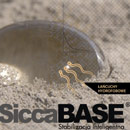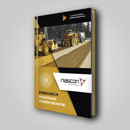In the construction industry, the ability to meet specific needs can significantly influence project outcomes. Volumetric concrete offers a unique solution through on-site mixing, allowing for customized formulations that can adapt to varying project demands. This flexibility ensures that contractors can produce the precise strength and consistency required, all while minimizing waste.
The diverse applications of volumetric concrete further highlight its practicality. From residential foundations to large commercial structures, this approach caters to a wide range of construction needs. The adaptability of volumetric mixing prepares materials that can respond to specific environmental conditions and performance expectations, making it an attractive option for builders looking for reliability and precision in their projects.
Choosing the Right Ingredients for Custom Concrete Mixes
Creating custom concrete mixes requires careful selection of ingredients to meet specific project needs. The fundamental components include aggregates, cement, water, and additives, each playing a crucial role in determining the final product's performance and appearance.
Aggregates are typically classified into fine and coarse. Fine aggregates, like sand, provide bulk and fill voids, while coarse aggregates contribute to strength and durability. The size and type of aggregates can significantly influence the concrete's workability and load-bearing capacity, making it essential to consider the intended application when selecting them.
Cement serves as the binding agent in concrete. Different types of cement are available, each with unique properties. Portland cement is the most commonly used, but alternatives such as fly ash or slag cement can enhance performance in specific situations. Choosing the right type of cement can improve the concrete's resistance to environmental factors, thereby extending its lifespan.
Water's quality and quantity are critical in achieving the desired consistency and strength. The water-to-cement ratio should be balanced, as too much water can weaken the mix, while too little can make it unworkable. The use of additives, including plasticizers and retarders, can help modify water needs and improve overall mix performance.
Incorporating admixtures offers further customization, allowing for adjustments in setting times, workability, and finishing properties. Options such as air-entraining agents can enhance freeze-thaw resistance, making them ideal for diverse applications exposed to harsh weather conditions.
Ultimately, careful consideration of each ingredient and its interaction within the mix is key to achieving a concrete solution tailored to your needs. Conducting tests and adjusting proportions will help ensure that the final product meets the performance criteria required for its intended purpose.
Optimizing Delivery and Mixing Processes for Different Projects
On-site mixing of volumetric concrete provides a unique opportunity to enhance the delivery and mixing processes tailored to specific project needs. By utilizing volumetric mixers, contractors can achieve minimal waste and maintain a constant flow of fresh concrete as required, which directly supports construction efficiency.
The precision in precise measurements allows for customization that aligns with the design parameters of various projects. This adaptability is particularly advantageous for unique architectural demands or specific environmental conditions. Aggregates, additives, and admixtures can be adjusted quickly on-site, ensuring that the concrete meets the necessary specifications without delays.
Implementing advanced quality control measures during the mixing process is crucial. Regular testing and adjustments ensure the concrete meets the standards for strength and durability. This consistent focus on quality enhances the project's longevity and performance, inspiring confidence among stakeholders.
Furthermore, the diverse applications of volumetric concrete mixers extend to residential, commercial, and industrial projects. Each application may require differing concrete properties, and on-site mixing allows for tailored solutions that respond to each project's individual requirements. Adopting this tailored approach ultimately leads to enhanced satisfaction and successful outcomes for all involved.
For more insights into effective concrete solutions, visit https://theconcretenetwork.co.uk/.
Quality Control Practices for Consistent Volumetric Concrete
Maintaining high standards in volumetric concrete production is critical for achieving consistency across diverse applications. Quality control practices must center around precise measurements and monitoring of ingredients throughout the mixing process, ensuring that each batch meets predetermined specifications.
To minimize waste, regular calibration of mixing equipment is necessary. This includes verifying scales and metering systems, which directly influences the accuracy of ingredient proportions. Regular maintenance checks further enhance performance, contributing to the overall reliability of the mixing process.
Implementing systematic sampling and testing protocols helps evaluate the performance of the concrete against established benchmarks. Both fresh and hardened concrete should undergo rigorous testing to assess factors like workability, compressive strength, and setting time. These evaluations are essential for confirming that the concrete meets project requirements.
Flexible delivery options also play a role in quality control. By adjusting delivery schedules to meet site conditions, ensuring timely mixing and placement reduces the risk of material degradation. This adaptability is key for projects requiring varying concrete specifications.
Incorporating feedback loops can enhance quality by addressing any issues that arise during delivery and application. Continuous communication between the mixing team and project managers allows for immediate corrections, promoting a culture of quality that supports consistent outcomes in volumetric concrete production.












